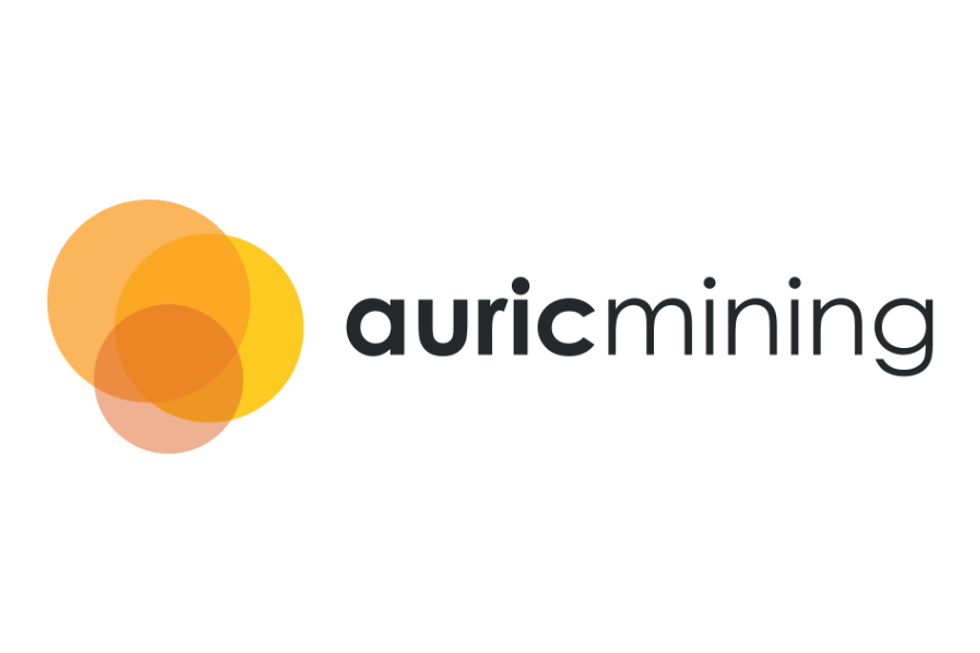- AustraliaNorth AmericaWorld
Investing News NetworkYour trusted source for investing success
- Lithium Outlook
- Oil and Gas Outlook
- Gold Outlook Report
- Uranium Outlook
- Rare Earths Outlook
- All Outlook Reports
- Top Generative AI Stocks
- Top EV Stocks
- Biggest AI Companies
- Biggest Blockchain Stocks
- Biggest Cryptocurrency-mining Stocks
- Biggest Cybersecurity Companies
- Biggest Robotics Companies
- Biggest Social Media Companies
- Biggest Technology ETFs
- Artificial Intellgience ETFs
- Robotics ETFs
- Canadian Cryptocurrency ETFs
- Artificial Intelligence Outlook
- EV Outlook
- Cleantech Outlook
- Crypto Outlook
- Tech Outlook
- All Market Outlook Reports
- Cannabis Weekly Round-Up
- Top Alzheimer's Treatment Stocks
- Top Biotech Stocks
- Top Plant-based Food Stocks
- Biggest Cannabis Stocks
- Biggest Pharma Stocks
- Longevity Stocks to Watch
- Psychedelics Stocks to Watch
- Top Cobalt Stocks
- Small Biotech ETFs to Watch
- Top Life Science ETFs
- Biggest Pharmaceutical ETFs
- Life Science Outlook
- Biotech Outlook
- Cannabis Outlook
- Pharma Outlook
- Psychedelics Outlook
- All Market Outlook Reports
JORC vs. NI 43-101: How Much Should Resource Rules Protect Investors?
Canada’s NI 43-101 and Australia’s JORC take different reporting approaches — what do investors really need to know?
Geological reporting rules have been getting tougher since the 1990s, when the Bre-X scandal kicked off the call for tighter standards for mining companies.
Canada’s National Instrument 43-101 classification scheme and the Australasian Joint Ore Reserves Committee (JORC) code are two regulatory answers to lax reporting.
But the codes are very different, and recent cases have highlighted that JORC is driven by the technical needs of the mining business, while NI 43-101 is increasingly a tool for securities regulation.
The JORC rules were written by the Joint Ore Reserves Committee, a mining industry body made up of technical professionals. NI 43-101 was created by the Canadian Securities Administrators, a group that is largely made up of lawyers.
NI 43-101 is therefore much more focused on how technical information is communicated to the public and specifies what information must go into a press release or technical report.
For example, NI 43-101 comes with a six-point laundry list of details that a company “must include” when reporting analytical results:
- the location and type of samples.
- the location, azimuth and dip of the drill holes and the depth of the sample intervals.
- a summary of the relevant analytical values, widths, and to the nearest extent known, the true widths of the mineralized zone.
- the results of any significantly higher-grade intervals within a lower-grade intersection.
- any drilling, sampling, recovery or other factors that could materially affect the accuracy or reliability of the data referred to in this subsection.
- a summary description of the type of analytical or testing procedures utilized, sample size, the name and location of each analytical or testing laboratory used and any relationship of the laboratory to the user.
JORC’s language is softer. The document provides a checklist of items similar to those required in NI 43-101, but then gives the following detoothing: “[i]t is the responsibility of the Competent Person to consider all the criteria listed below … The relative importance of the criteria will vary with the particular project and the legal and economic conditions pertaining at the time of determination.”
In effect, JORC leaves it to the person writing the report to make the final call on what goes in. NI 43-101 states simply, “thou shalt include this information.”
Further, JORC notes that, “[i]n some cases it will be appropriate for a Public Report to exclude some commercially sensitive information.” In other words, information can be withheld from the public if the report author believes it’s a trade secret. NI 43-101 reporters don’t get this option.
The Barkerville case
The end result is that JORC puts a lot of trust in the “competent person” writing the report, while NI 43-101 tells the “qualified person” authoring the technical document that they must do this and that.
There are pros and cons to being so detailed. Just ask investors who bought shares of Barkerville Gold Mines (TSXV:BGM) in the summer of 2012.
Between last May and July, the stock enjoyed a spectacular run, increasing from $0.35 to as high as $1.67. The gains were propelled by the announcement that the company held some 10.6 million ounces of gold at its Cow Mountain project in British Columbia and buoyed further by assertions that the “geological potential” of the project area could be as high as 90 million ounces of gold.
During the fervor following these announcements, buyers snapped up over 60 million shares of Barkerville.
Then, on August 15, the British Columbia Securities Commission suspended trading on the company, noting that documentation supporting the sizeable gold resource numbers was “not in the required form under National Instrument 43-101.”
The company’s shares have not traded since then, effectively locking in shareholders who ponied up millions.
Regulating uncertainty
The Barkerville case illustrates one of the major problems in trying to regulate the mining business: very little in mineral exploration is as cut-and-dried as the rules are.
Most observers agree that Barkerville’s Cow Mountain resource estimate verged on impossible. The results from the property — historical and modern — simply don’t support the lofty numbers.
Yet the company did what it was supposed to do under NI 43-101. The resource report was authored by an independent consultant who drew his own conclusions from the data.
Yes, the securities commission eventually struck down the resource report for not being in the proper “form.” But there has never been a detailed explanation of what exactly was non-compliant. The sense is that something just didn’t “smell right” about the numbers. The company itself has said it is working to fix its deficiencies, with the work appearing to consist mainly of twinning drill holes.
That is the rub: geology is a highly interpretive science.
The Barkerville case proves that even an independent, qualified expert — working within a strict set of rules like NI 43-101 — can still come up with far-flung conclusions.
NI 43-101 of course tries to combat this issue by requiring reams of paper explaining every last detail about the work that has been done. The hope is that report readers can parse the heap of data to spot any errors, thus drawing their own conclusions about the quality of the resource numbers, net present value or metallurgical recoveries.
Not for everyone?
But the truth is that data can only help so much. Its usefulness is limited by the expertise of the report reader.
All the disclosure in the world doesn’t make a difference if the reader doesn’t know how to analyze this information. And many people don’t — including some technical professionals in the diverse fields of geology and engineering.
That’s why JORC puts more trust in the report writer, allowing them to both choose the relevant information and make conclusions from it.
Yes, some “experts” will use this opacity to draw dubious findings. In fact, the pressure to do so can be great given that consultants are paid by firms with a vested interest in getting the best-looking results.
But investors can then examine the strength of the expert, which is in many cases easier to do than trying to assess the quality assurance data for 2,000 drill holes.
In Barkerville’s case, the resource report was prepared by Geoex, a tiny consultancy with only a few other jobs for TSX companies under its belt. Readers who made that observation might have had less confidence in the report than they would have if it had been created by a large, experienced firm like SRK Consulting or AMEC.
Telling the Earth what to do
The answer to cases like Barkerville’s has been for NI 43-101 regulators to become even more controlling of the technical reporting process, to the point that some observers believe rule makers are telling the Earth what to do.
Batero Gold (TSXV:BAT) provides an interesting example.
During 2011 and 2012, Batero ran a promising drill campaign on its Batero-Quinchia gold-copper project in Colombia. Results had analysts and investors convinced that a maiden resource there would be sizeable.
But when the resource estimate was released on February 27, 2012, there was something odd. It was in a pit.
The authors of the resource report, Roscoe Postle Associates, used a software program called Whittle to draw a conceptual open pit around the Batero-Quinchia mineral resource. The mineral estimate only included mineralization that fell within this imaginary boundary — excluding anything outside of it.
The resource thus came in skinnier than many had expected, causing the stock to instantly plummet by more than 50 percent.
Drawing pits is a normal and necessary practice for a project at the preliminary economic assessment or feasibility study stage, but it’s extremely unusual for a maiden resource estimate.
Such estimates usually provide a look at how much overall mineralization exists. Period. It is not until later that the company decides which mining method to use and which zones of the overall deposit will be targeted. At that point, conceptual pits and underground workings are drawn up and used to calculate the reserves that will result from the application of these economics-driven factors.
The company never stated what drove it and its consultants to take such advanced steps in calculating the resource, but large consulting firms say that Canadian securities regulators are increasingly pressuring them to be more stringent about resource estimation criteria.
If Batero was indeed such a case, it raises the question: are investors being treated fairly when companies show only a portion of their overall mineral resource? Or should reports show the entire mineralized body without any initial judgments on mining methods and let buyers make up their own minds about what portion might eventually see the mill?
Therein lies the philosophical split between NI 43-101 and JORC. How much freedom — and how much risk for investors — can and should be regulated away?
Securities Disclosure: I, Dave Forest, do not hold equity interest in any companies mentioned in this article.
Related reading:
Outlook Reports
Featured Resource Investing News Stocks
Browse Companies
MARKETS
COMMODITIES
| Commodities | |||
|---|---|---|---|
| Gold | 2390.86 | +0.85 | |
| Silver | 28.67 | +0.01 | |
| Copper | 4.52 | +0.05 | |
| Oil | 83.24 | +0.51 | |
| Heating Oil | 2.55 | +0.01 | |
| Natural Gas | 1.76 | 0.00 | |
Investing News Network websites or approved third-party tools use cookies. Please refer to the cookie policy for collected data, privacy and GDPR compliance. By continuing to browse the site, you agree to our use of cookies.






